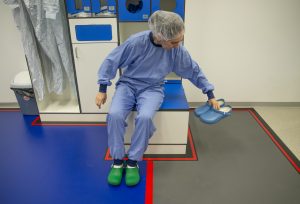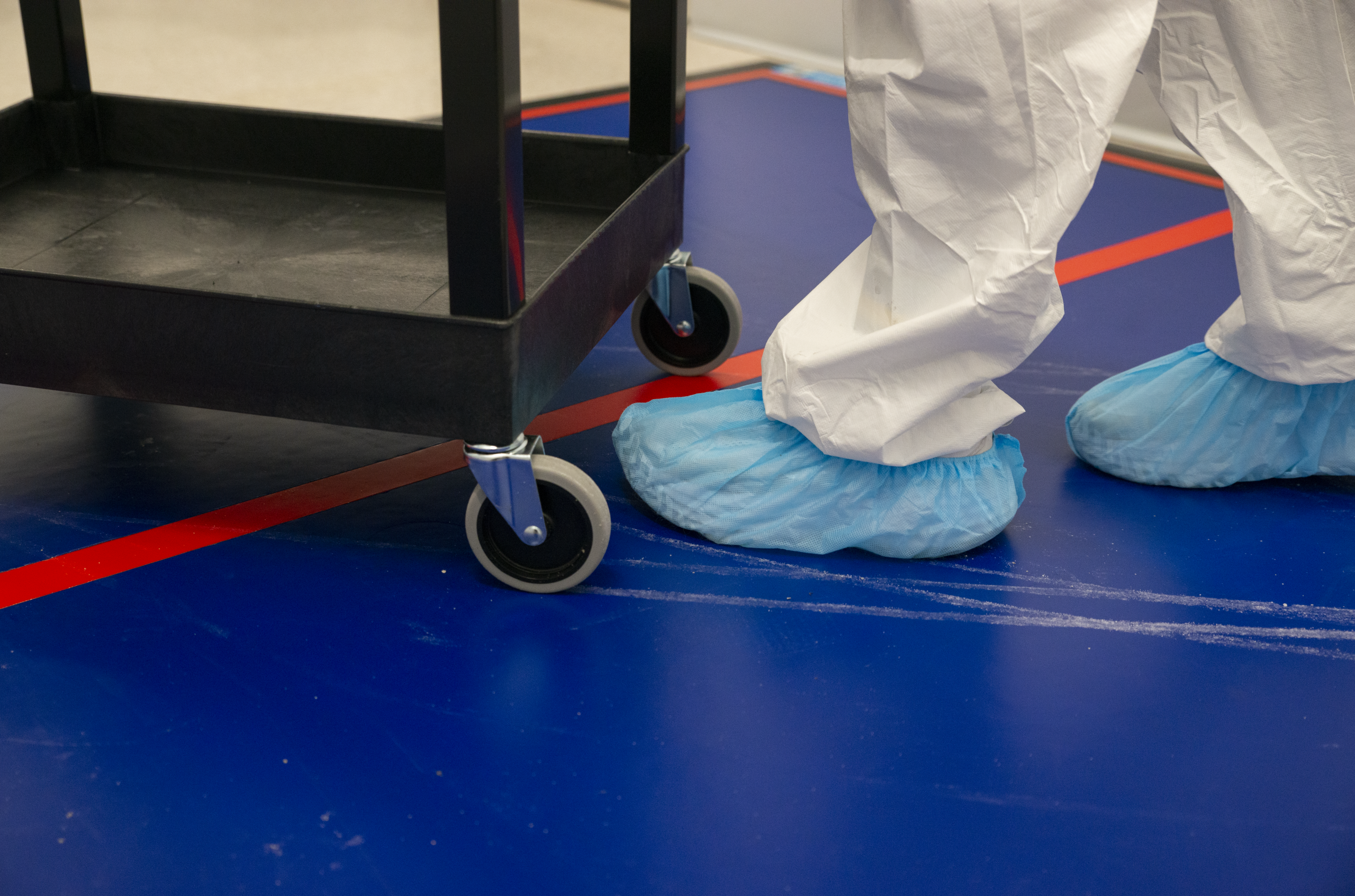Most cleanroom managers already know the obvious risks: airborne particles, poor gowning, and inadequate cleaning routines. Yet, contamination often infiltrates in ways that go unnoticed. These hidden sources of contamination can undermine even the most carefully designed contamination control program.
So where should you be looking? Let’s explore the overlooked pathways that allow contamination to creep into your cleanroom, and how to get ahead of them.
The Obvious Sources (and Why They’re Not Enough)
Air handling systems, surface cleaning, and gowning protocols are essential, but they only address the risks everyone knows about. The real challenge lies in the subtle, hard-to-detect sources that compromise quality, safety, and compliance.
1. Footwear & Floor-Level Contamination
Every step inside your facility can carry hundreds of thousands of particles and microbes from uncontrolled areas into clean zones. Floors act as a major contamination highway: shoes, wheels, and even vibrations kick particles back into circulation.
The problem? Traditional sticky mats and shoe covers often fail to effectively control contamination, generate excessive waste, and prove costly over time. A long-lasting, high-performance floor-level barrier is critical to closing this overlooked gap. Reusable polymeric mats, like Dycem, often offer a more effective and sustainable solution.
2. Packaging & Materials
Even if packaging is stripped before entering clean zones, fibers, dust, and residues from cardboard or shrink wrap can linger. Materials moved between zones may shed particles at every step of the journey, introducing risks where you least expect them.
The takeaway: consider approved, low-shedding materials and ensure packaging protocols extend beyond the airlock.
3. Cleaning Tools & Practices
Ironically, cleaning routines themselves can become contamination sources. Reusable mops, cloths, and buckets often spread particles instead of removing them. Unless tools are validated for cleanroom use and replaced frequently, they can create more problems than they solve.
Even automated cleaning equipment like scrubbers and vacuums can redistribute contaminants if improperly maintained.
4. Personnel Movement & Habits
It’s not always the systems, it’s the people. Hidden contamination can arise from:
- Rushed gowning procedures
- Frequent door opening and unnecessary traffic between rooms
- Personal items brought into controlled spaces
- Poor adherence to zoning rules
Small lapses in behavior add up quickly, which is why culture and training are just as important as equipment. Additionally, visual aids such as signage and Dycem mats in different colors can help remind personnel to follow the correct protocols.

5. Equipment & Carts
Mobile equipment is another overlooked vector. Wheels, trolley undersides, and rarely cleaned machinery surfaces can harbor contamination that bypasses traditional control measures. Tools and electronic devices can shed particles or transport contaminants unless specifically designed and approved for cleanroom use.
Ensure wheels are properly sanitized and use a floor-level barrier, such as Dycem’s polymeric mats, to capture contamination. Unlike sticky mats, Dycem is non-adhesive and wheel-friendly, preventing debris from being tracked into critical areas.
The Ripple Effect of Hidden Contamination
The danger of these overlooked risks isn’t just theoretical. Hidden contamination can lead to:
- Failed audits and regulatory non-compliance
- Production downtime and costly recalls
- Increased waste and rework
- Compromised product quality and patient safety
In high-stakes industries like pharmaceuticals, biotech, and advanced manufacturing, even small oversights can have million-dollar consequences.
Solutions & Best Practices
Addressing hidden contamination requires a multi-layered approach:
- Review and tighten packaging protocols
- Use validated cleaning tools and replace them regularly
- Train personnel not just on procedures, but on the why behind them
- Audit equipment and trolleys frequently
Consider engineered, long-lasting solutions at the floor level. Reusable polymeric mats, like Dycem, can trap up to 99.9% of foot and wheel-borne contamination at the point of entry, dramatically reducing the risk of transfer into your controlled environments.
Conclusion
Cleanrooms don’t usually fail because of the risks everyone knows; they fail because of the ones nobody notices. By identifying and addressing hidden sources of contamination, facilities can safeguard compliance, reduce waste, and protect both products and patients.

